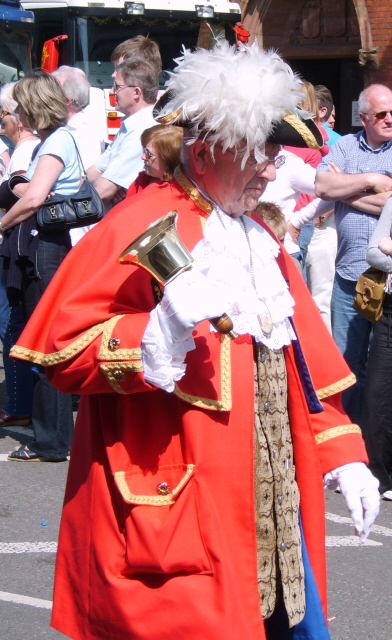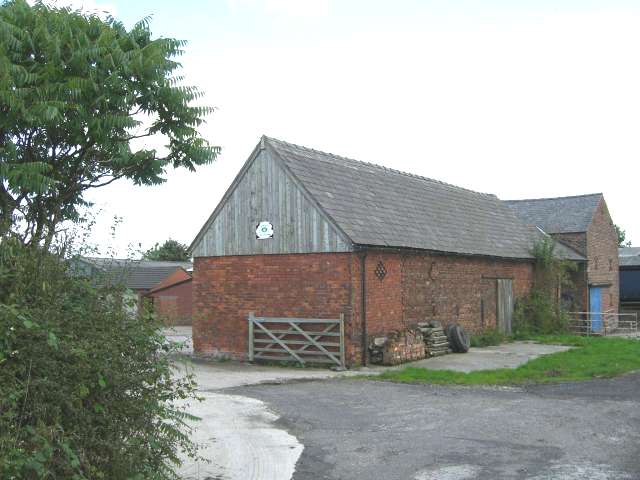|
Smallwood, Cheshire
Smallwood is a civil parish and small village in the unitary authority of Cheshire East and the ceremonial county of Cheshire, England. The village is approximately east of Sandbach and 3 miles south-west of Congleton. It is based in a rural area and is largely agricultural. At the 2001 census, the parish had a population of 491, increasing to 614 at the 2011 Census. There is a primary school (Smallwood Church of England Primary Academy) within the village, and also a children's day nursery attached to a farm. St John's Parish Church, built between 1843 and 1846, is Grade II listed. A Village Design Statement was created by Smallwood Parish Council, residents of Smallwood and Cheshire East Council. It gives a full description of the village, including its history. In addition it is also a planning document adopted by Cheshire East Council on 14 October 2010. See also *Listed buildings in Smallwood, Cheshire Smallwood, Cheshire, Smallwood is a Civil parishes in England, c ... [...More Info...] [...Related Items...] OR: [Wikipedia] [Google] [Baidu] |
Cheshire East
Cheshire East is a unitary authority area with Borough status in the United Kingdom, borough status in the ceremonial county of Cheshire, England. The local authority is Cheshire East Council. Towns within the area include Crewe, Macclesfield, Congleton, Sandbach, Wilmslow, Handforth, Knutsford, Poynton, Bollington, Alsager and Nantwich. The council is based in the town of Sandbach. History The borough council was established in April 2009 as part of the 2009 structural changes to local government in England, by virtue of an order under the Local Government and Public Involvement in Health Act 2007. It is an amalgamation of the former boroughs of Macclesfield (borough), Macclesfield, Congleton (borough), Congleton and Crewe and Nantwich, and includes the functions of the former Cheshire County Council. The residual part of the disaggregated former County Council, together with the other three former Cheshire borough councils (Chester City, Ellesmere Port & Neston and Vale Royal) ... [...More Info...] [...Related Items...] OR: [Wikipedia] [Google] [Baidu] |
Cheshire
Cheshire ( ) is a ceremonial and historic county in North West England, bordered by Wales to the west, Merseyside and Greater Manchester to the north, Derbyshire to the east, and Staffordshire and Shropshire to the south. Cheshire's county town is the cathedral city of Chester, while its largest town by population is Warrington. Other towns in the county include Alsager, Congleton, Crewe, Ellesmere Port, Frodsham, Knutsford, Macclesfield, Middlewich, Nantwich, Neston, Northwich, Poynton, Runcorn, Sandbach, Widnes, Wilmslow, and Winsford. Cheshire is split into the administrative districts of Cheshire West and Chester, Cheshire East, Halton, and Warrington. The county covers and has a population of around 1.1 million as of 2021. It is mostly rural, with a number of towns and villages supporting the agricultural and chemical industries; it is primarily known for producing chemicals, Cheshire cheese, salt, and silk. It has also had an impact on popular culture, producin ... [...More Info...] [...Related Items...] OR: [Wikipedia] [Google] [Baidu] |
Congleton (UK Parliament Constituency)
Congleton is a parliamentary constituency in Cheshire, represented in the House of Commons of the UK Parliament since 2010 by Fiona Bruce of the Conservative Party. Constituency profile The constituency adjoins the Stoke-on-Trent urban area and rural areas in all other directions, including the Peak District to the East, Staffordshire Moorlands to the South and Cheshire Plain to the West. Congleton is a stronghold for the Conservative Party as the seat has elected a Conservative MP since its creation in 1983, with a majority of 32% in the 2019 general election. The constituency consists mainly of rural areas of south-east Cheshire, with the only four towns being - in descending order of population - Congleton, Sandbach, Middlewich and Alsager. The seat is also home to the large village of Holmes Chapel, as well as many much smaller villages and settlements, such as Church Lawton, Rode Heath and Goostrey. Creation The constituency was created for the 1983 general elec ... [...More Info...] [...Related Items...] OR: [Wikipedia] [Google] [Baidu] |
Civil Parishes In England
In England, a civil parish is a type of Parish (administrative division), administrative parish used for Local government in England, local government. It is a territorial designation which is the lowest tier of local government below districts of England, districts and metropolitan and non-metropolitan counties of England, counties, or their combined form, the Unitary authorities of England, unitary authority. Civil parishes can trace their origin to the ancient system of Parish (Church of England), ecclesiastical parishes, which historically played a role in both secular and religious administration. Civil and religious parishes were formally differentiated in the 19th century and are now entirely separate. Civil parishes in their modern form came into being through the Local Government Act 1894, which established elected Parish councils in England, parish councils to take on the secular functions of the vestry, parish vestry. A civil parish can range in size from a sparsely ... [...More Info...] [...Related Items...] OR: [Wikipedia] [Google] [Baidu] |
Sandbach
Sandbach (pronounced ) is the name of a historic market town and a civil parish in the unitary authority of Cheshire East, Cheshire, England. The civil parish contains four settlements: Sandbach itself as the largest, Elworth, Ettiley Heath and Wheelock. Sandbach is perhaps best known as the original home of Foden and ERF lorries, though neither company now exists in the town; twelve-times National Brass Band Championship winners Foden's Band; the ancient Saxon Sandbach Crosses; and Sandbach services on the M6 motorway. History Known as Sanbec in 1086, Sondbache (also Sondebache) in 1260, and Sandbitch in the 17th–18th centuries, Sandbach derives its name from the Anglo-Saxon ''sand bæce'', which can mean "sand stream" or "sand valley". The modern German word ''Bach'', with a similar origin as ''bæce'', means "brook"; thus, the meaning of Sandbach can be understood correctly in German. In Germany, there are two places and several small waterways of that name, see Ger ... [...More Info...] [...Related Items...] OR: [Wikipedia] [Google] [Baidu] |
Congleton
Congleton is a town and civil parish in the unitary authority of Cheshire East in Cheshire, England. The town is by the River Dane, south of Manchester and north of Stoke on Trent. At the 2011 Census, it had a population of 26,482. Toponymy The town's name is of unknown origin. The first recorded reference to it was in 1282, when it was spelt ''Congelton''. The element ''Congle'' might relate to the old Norse ''kang'' meaning a bend, followed by the Old English element ''tun'' meaning settlement. History The first settlements in the Congleton area were Neolithic. Stone Age and Bronze Age artefacts have been found in the town. Congleton was once thought to have been a Roman settlement, although there is no archaeological or documentary evidence to support this. Congleton became a market town after Vikings destroyed nearby Davenport. Godwin, Earl of Wessex held the town in the Saxon period. The town is mentioned in the Domesday Book, where it is listed as ''Cogeltone: ... [...More Info...] [...Related Items...] OR: [Wikipedia] [Google] [Baidu] |
St John The Baptist's Church, Smallwood
St John the Baptist's Church is in Church Lane, Smallwood, Cheshire, England. It is an active Anglican parish church in the deanery of Congleton, the archdeaconry of Macclesfield, and the diocese of Chester. Its benefice is combined with those of St Mary, Astbury, and All Saints, Somerford. The church is recorded in the National Heritage List for England as a designated Grade II listed building. History St John's was built between 1843 and 1846, and designed by Charles and James Trubshaw. Architecture The church is constructed in yellow sandstone rubble with ashlar dressings and has slate roofs. Its plan consists of a nave, a southwest porch, a chancel, and a northwest vestry. On the west gable is a single bellcote. The windows are lancets, some of which contain Y-tracery. At the east end is a triple stepped lancet window. At the corners of the church are angle buttresses. Inside the church is a hammerbeam roof. See also *Listed buildings in Smallwood, Chesh ... [...More Info...] [...Related Items...] OR: [Wikipedia] [Google] [Baidu] |
Listed Buildings In Smallwood, Cheshire
Smallwood is a civil parish in Cheshire East, England. It contains nine buildings that are recorded in the National Heritage List for England as designated listed buildings, all of which are listed at Grade II. This grade is the lowest of the three gradings given to listed buildings and is applied to "buildings of national importance and special interest". Apart from the village of Smallwood, the parish is rural. The listed buildings consist of farmhouses, farm buildings, a house, a school, a former Women's Land Army The Women's Land Army (WLA) was a British civilian organisation created in 1917 by the Board of Agriculture during the First World War to bring women into work in agriculture, replacing men called up to the military. Women who worked for the W ... hostel, and a church. References Citations Sources * * * * * * * * * * * {{DEFAULTSORT:Smallwood, Cheshire Listed buildings in the Borough of Cheshire East Lists of listed buildings in Cheshire [...More Info...] [...Related Items...] OR: [Wikipedia] [Google] [Baidu] |
Villages In Cheshire
A village is a clustered human settlement or Residential community, community, larger than a hamlet (place), hamlet but smaller than a town (although the word is often used to describe both hamlets and smaller towns), with a population typically ranging from a few hundred to a few thousand. Though villages are often located in rural areas, the term urban village is also applied to certain urban neighborhoods. Villages are normally permanent, with fixed dwellings; however, transient villages can occur. Further, the dwellings of a village are fairly close to one another, not scattered broadly over the landscape, as a dispersed settlement. In the past, villages were a usual form of community for societies that practice subsistence agriculture, and also for some non-agricultural societies. In Great Britain, a hamlet earned the right to be called a village when it built a Church (building), church. [...More Info...] [...Related Items...] OR: [Wikipedia] [Google] [Baidu] |


_in_1902.png)

